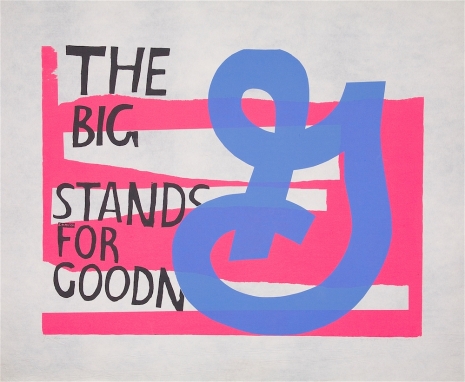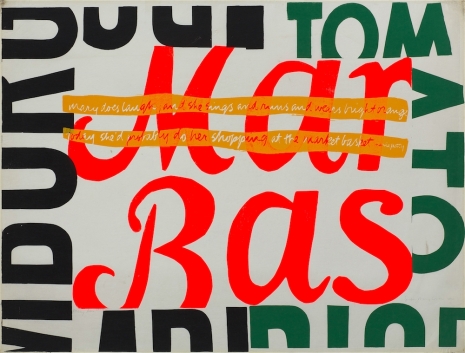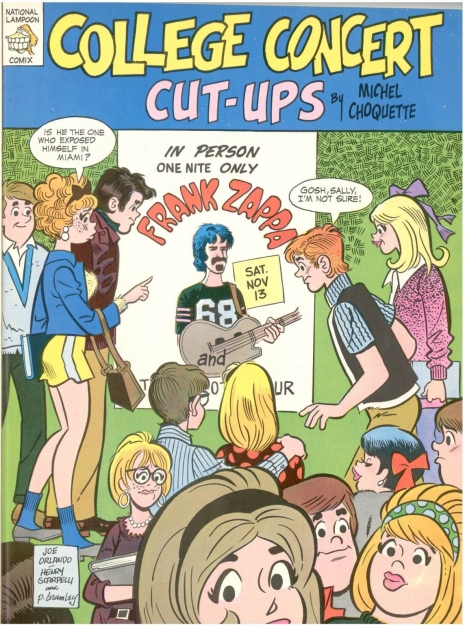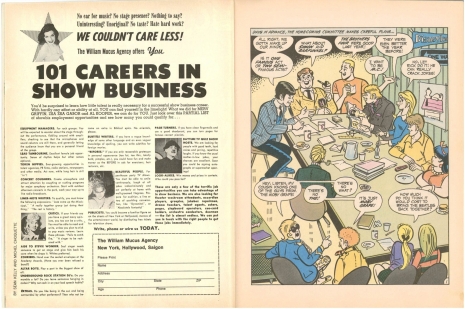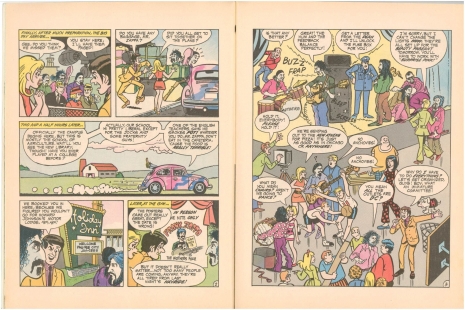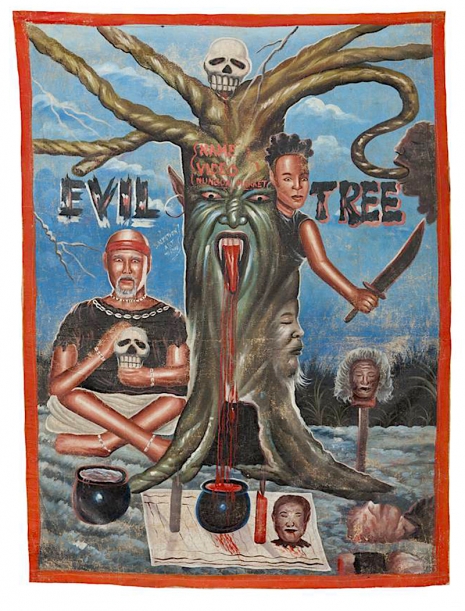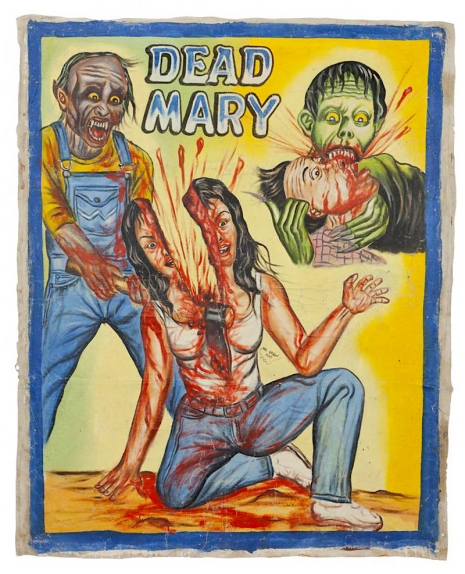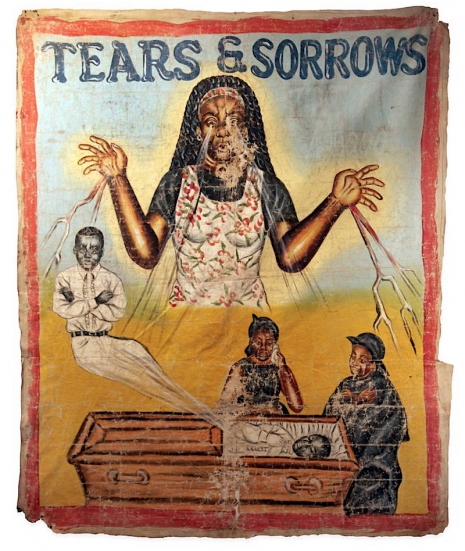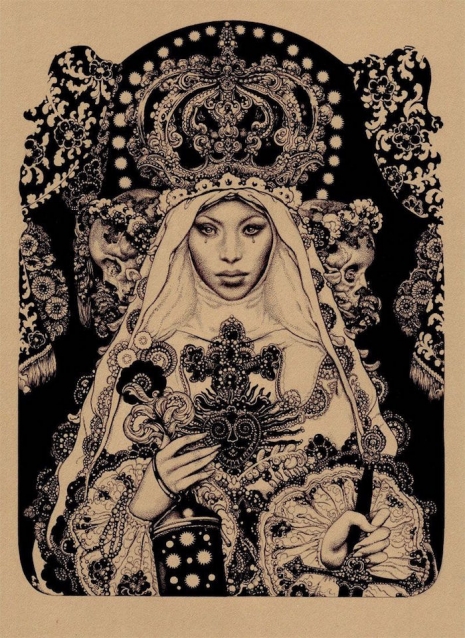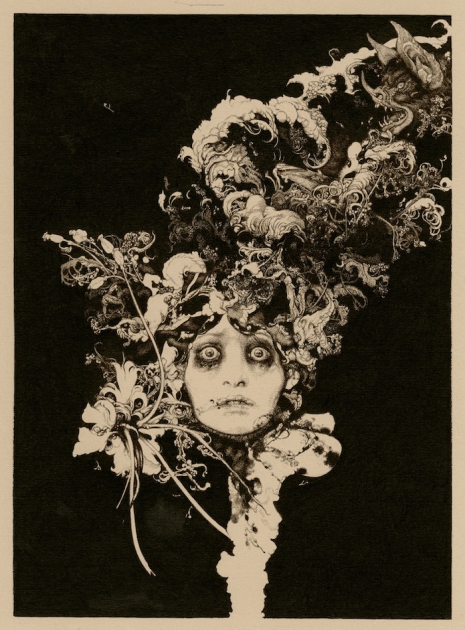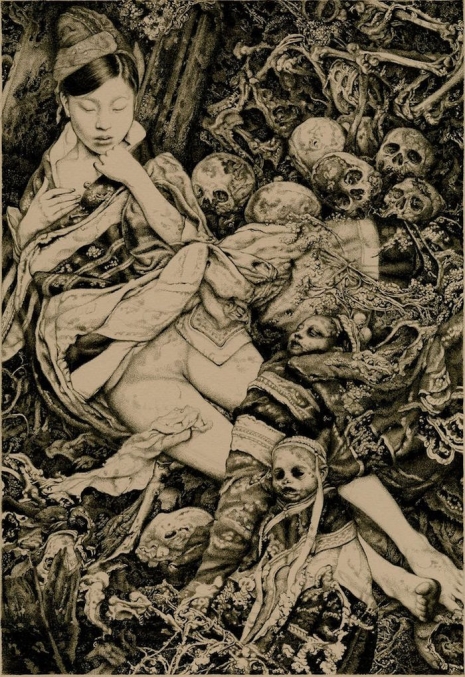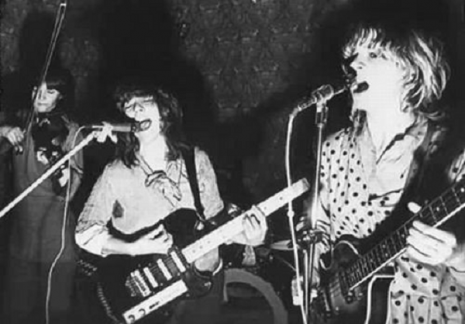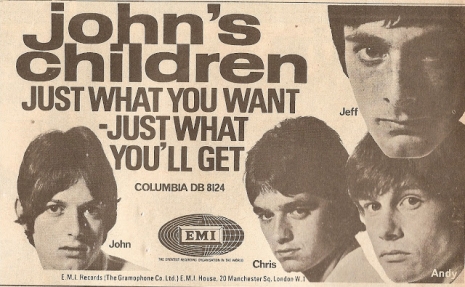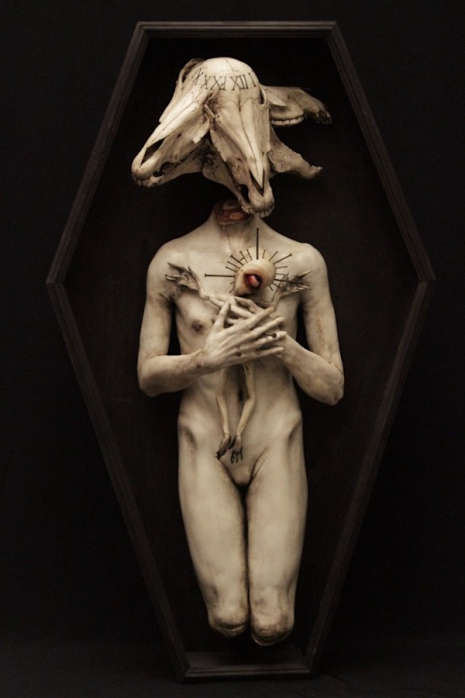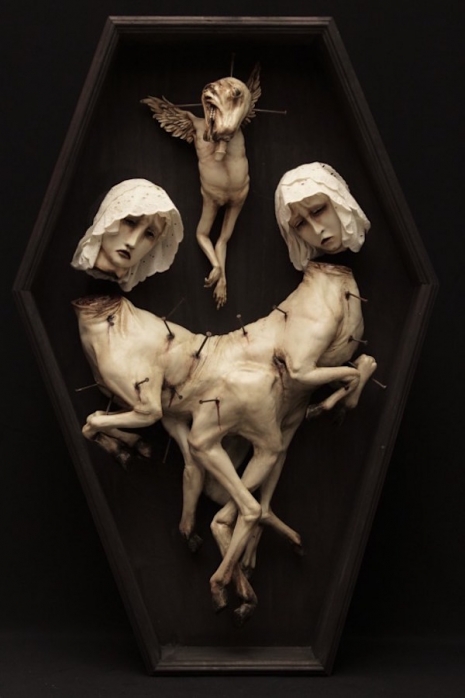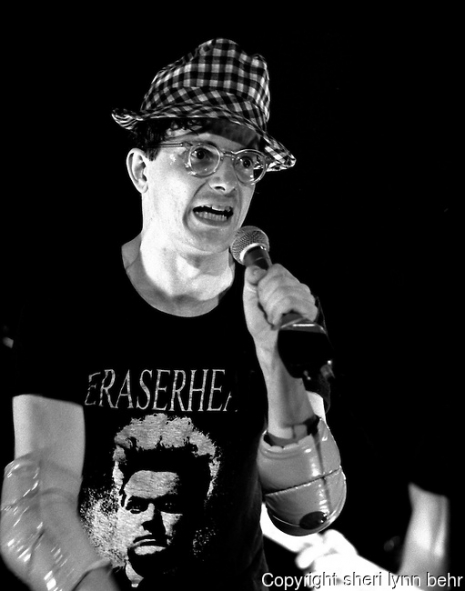
Mark Mothersbaugh at the Bottom Line, NYC, 1978 (Photo by Sheri Lynn Behr)
You know the junkie truism about chasing your first high? For me, the record-shopping equivalent of the initial drug rush was turning over the Pixies’ import-only “Gigantic/River Euphrates” single and finding the Lady in the Radiator’s song from Eraserhead listed on the back. Their actual arrangement of “In Heaven” was not particularly inspired, as I found out when I got the CD home, but that didn’t diminish the thrill of the moment of discovery. What a miraculous world this must be!
As I subsequently learned during years spent hunched over record bins, trying to swindle the plane of gross matter out of another peak experience, Tuxedomoon and Bauhaus had covered “In Heaven (Lady in the Radiator Song)” years before the Pixies did. But they were all playing catch-up with DEVO, who obtained permission to perform the song from both of its writers during the very year of Eraserhead‘s release.
Peter Ivers and David Lynch co-wrote “In Heaven”; that’s Ivers’ voice singing the song in the movie. Ivers was the genius musician who recorded for Warner Bros. and Epic and hosted New Wave Theatre before he was murdered in 1983. His life is the subject of a book by Pixies biographer Josh Frank, who writes that Lynch and Ivers met with DEVO in Los Angeles in 1977 after the group expressed interest in performing their song. At Lynch’s favorite restaurant, Bob’s Big Boy, Jerry Casale recognized the Ivers in DEVO and the DEVO in Ivers:
Like Devo, Peter was always testing people, always playing, performing his one-man guerrilla theatre for whomever happened to be there. Had they met in Akron, Peter undoubtedly would have been part of Devo. Lucky for Peter, Casale thought, he wasn’t in Akron.
But he would be with them, at least in spirit, from now on: Devo would bring Peter’s song with them on tour, making it a staple of their live act. Whenever possible, Peter would come to the shows and cheer them on.
As lunch wound down, Casale asked Peter to transcribe the song. Among his friends, Peter was known for his crisp, meticulous handwriting, especially when writing out music. He would crouch over the page, with the concentration of a second-grader taking his first handwriting test. Peter grabbed a napkin from the booth at Bob’s Big Boy, and, temporarily shutting out everything else in the room, wrote out the chords and the words to “In Heaven.” He handed the napkin to Jerry as Lynch polished off his coffee and drew a last, long slurpy sip of his Silver Goblet.
Casale told Frank that DEVO played “In Heaven” every night on their 1979 tour. “Booji Boy came out, we played it on little Wasp synthesizers, and he sang ‘In Heaven.’” In this undated bootleg from that tour, Booji Boy prophesies the future. He tells how one day, DEVO will come back to jam some subsonic frequencies and “we’ll all shit our pants together.” Later, when the hour is ripe for murder, DEVO will return to “kill all the normal people.”
Listen after the jump…







